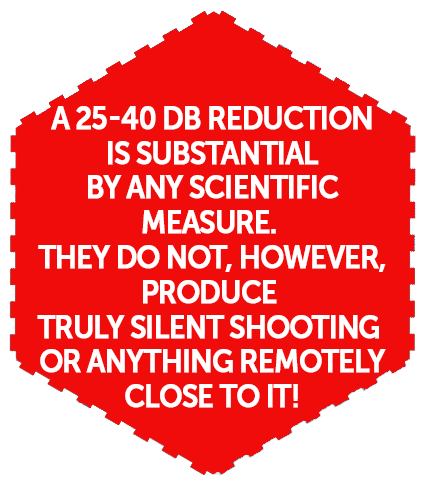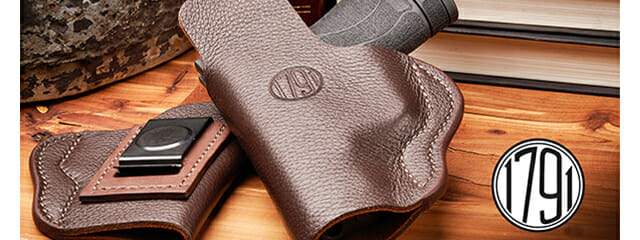Why You Should Buy a Suppressor/Silencer
Following the shooting in Virginia Beach back in May, anti-gun activists have turned some of their ire toward one of the least popular accessories to criminal shootings – suppressors. Because the shooter in that incident opted to use a legally-owned suppressor on one of the two .45 ACP pistols used in the crime, flawed arguments that silencers are tools for assassins have again hit the mainstream. In a previous article, I dispelled many of these falsehoods, so today we will focus primarily on the many positive aspects of suppressor use to help explain why so many of us have hopped on the suppression bandwagon and why readers who haven’t already purchased one should join the party.
Hearing Protection
The most obvious utility claimed by suppressors is, well, their ability to suppress. There are a lot of widely held misconceptions in this area. The first thing we need to address is that these devices aren’t nearly as effective as they appear to be in film. Hollywood has done suppressors a grave disservice dating back decades. I love Bond flicks, but the way 007 can slap a pill-bottle sized can on his PPK and suddenly have a totally silenced pistol is just flat out wrong.
Other movies and shows are even worse, featuring silent, full-auto M4s dumping round after round that sound more like sewing machines than firearms. For a firearms nerd, its aggravating to say the least.
So then, how effective are suppressors? The truth is, despite my exasperation over their representation in popular culture, they’re still quite good at what they do. On average, a centerfire pistol or rifle silencer should be expected to bring sound pressure levels  (measured in decibels) down to around 125 to 140 decibels (dB) when measured near the firearm’s muzzle. That’s down from 160 or so decibels without the silencer attached. Comparatively speaking, it’s equivalent to dropping jet engine level sound volume to around jackhammer levels. In practice, the difference is more striking. An unsuppressed firearm will result in some degree of hearing damage if it is not used with hearing protection. A suppressor brings the volume down to levels that OSHA considers safe for limited exposure or impact noises. The end result is that in some cases, a suppressor is all that is needed to make a firearm “hearing safe”.
(measured in decibels) down to around 125 to 140 decibels (dB) when measured near the firearm’s muzzle. That’s down from 160 or so decibels without the silencer attached. Comparatively speaking, it’s equivalent to dropping jet engine level sound volume to around jackhammer levels. In practice, the difference is more striking. An unsuppressed firearm will result in some degree of hearing damage if it is not used with hearing protection. A suppressor brings the volume down to levels that OSHA considers safe for limited exposure or impact noises. The end result is that in some cases, a suppressor is all that is needed to make a firearm “hearing safe”.
I’ve been told by some anti-gun types that we suppressor owners like to speak out of both sides of our mouth when it comes to this topic. According to them, we’re arguing that suppressors are simultaneously ineffective and very effective. This isn’t true at all.
Suppressors work very well if you have a realistic expectation of what they’re supposed to accomplish. A 25-40 dB reduction is substantial by any scientific measure. It truly is the difference between relatively painless shooting and busted eardrums. They do not, however, produce truly silent shooting – or anything remotely close to it. Suppressed firearms, particularly centerfire models, are still several orders of magnitude louder than the spoken word.
Noise Pollution, or Lack Thereof
Even when shooting ranges do everything right in terms of policing shooters, they sometimes fall victim to unfriendly neighbors and developers who encroach upon the range’s property. Sometimes, existing statutes “grandfather” these ranges, protecting them from complaints made by newcomers to the area and newer developments. Other times, particularly in cases where individuals shoot on their own private (safe) property, the outcome may be less positive.
Suppressors address noise pollution concerns that come with shooting by, well, eliminating some of the noise. Add a suppressor and suddenly, that development a half a mile so down the road won’t find your shooting anywhere near an obnoxious as unsuppressed shots. Suppressed shooting has absolutely no ill effect on the safety of the range and is entirely beneficial as a courtesy to neighbors – who may not always be so reasonable or understanding.
Reduced Blast
The video segment shows just how significant the difference in blast between suppressed and unsuppressed fire can be.
The volume of the shot is one thing, the concussion is another beast – sort of. Concussion (really blast) and sound are related. The same pressure wave that makes the gun loud causes the felt concussive force that makes shooting some firearms intimidating for new shooters and unpleasant for experienced ones.
So why talk about this as a separate point? The answer is simple. Where sound reduction is, quite uniform, how much of that blast you end up feeling depends largely on your environment. A firearm is technically just as loud (at the muzzle) in an open environment as it is on a covered range, but the latter is going to be less pleasant and more jarring as surfaces – especially hard ones – reflect the pressure wave. Adding the suppressor means that the gun is more usable in a wider variety of settings.
Communication
Traditional hearing protection solutions like ear muffs have a few significant drawbacks. These include size, performance (many perform worse than suppressors), reliability, and ability to communicate. The importance of unhindered communication in any setting involving firearms really cannot be stressed enough.
Suppressors’ ability to replace traditional hearing protection in specific settings where communication is vitally important is largely why the devices have become popular with law enforcement, hunters, and forward-thinking enthusiasts with home-defense firearms. In each of these situations, differentiating between target/foe and friendly relies heavily on verbal communication. All types of traditional hearing protection, save electronic ear muffs, reduce situational awareness by interfering with sounds destined for the shooter’s ear. And it isn’t exactly like any of these situations lend themselves to grabbing a pair of muffs or plugs right before you pull the trigger. Suppressors operate closer to the source of the sound and facilitate life-saving verbal communication.
Improved Accuracy
There are a couple of ways suppressors can improve your accuracy. The first is incidental. A quieter weapon with less concussion inherently means you’re less likely to flinch or anticipate the shot in a manner that may negatively impact accuracy.

The second method is mechanical. Suppressor weight impacts barrel harmonics. The results of this effect can be either positive or negative. There’s no question that suppressors, particularly heavy ones, lead to significant changes in point of impact. However, my experience has generally been that they’re modestly beneficial when it comes to consistency. This assumes that the silencer is properly made.
Recoil Reduction
We’re starting to get to the perimeter of benefits here, but recoil reduction is still worth noting. I consider the recoil effects of suppressors to be somewhat beneficial. By this, I mean that this is more of a situational bonus than a hard rule.

Consider gas-operated, semi-automatic rifles for example. These firearms rely on pressurized gas that follows the bullet while it is in the barrel. The confined nature of suppressors effectively lengthens the barrel and affords that gas more time to work against the rifle’s piston or bolt carrier. This increased “dwell time” increases the speed of the action and actually increases felt recoil. Gas operated firearms can be tuned with adjustable gas blocks to offset this effect. It’s also worth noting that the suppressor itself acts as a massive muzzle brake and therefore counteracts the increased recoil. The result is that on some firearms, the issue is a wash or even leans in favor of overall recoil reduction.
Pistols and bolt-action rifles tell a different story. The added weight offered by a suppressor on the end of a pistol greatly reduces muzzle flip. This comes at the expense of sight picture as most pistol silencers obscure the firearm’s iron sights. Suppressors can also negatively impact the reliability of pistols, but proper barrel fit and a booster assembly for the silencer both go a long way to address this concern.
Whereas suppressors can increase felt recoil on gas-operated rifles, they often significantly diminish the shoulder punch generated by bolt-action rifles. This, again, is because the suppressor’s baffles act like the blast faces of a muzzle brake. As the expanding gasses push the round through the suppressor, they collide with the baffles inside the can. These collisions pull the whole firearm forward and counteract the rearward recoil force.
New Shooters
A final point and one that quite frankly is the culmination of all the advantages mentioned above. If you’re new to firearms, they can be quite intimidating. They’re unquestionably loud and some make for effective shoulder tenderizers after a long day at the range. Those of us who know what to expect have more or less come to expect and accept these side effects. For newcomers, however, they can be real showstoppers that undermine continued interest in shooting sports. Suppressors address these concerns in virtually every way. If I were just a hair more cynical and a smidge more charitable regarding anti-gun activists’ knowledge level, I’d argue that this is a significant driver for opposition to suppressor ownership.
Closing Thoughts
By now it should be clear that there are plenty of reasons to own a suppressor beyond hearing protection. They’re certainly not totally silent, but they do offer tangible benefits to bystanders and others near the shooting range who might be bothered by gunfire. Moreover, suppressors make it easier for shooters to communicate with others, enhancing overall safety in both defensive and recreational environments. The reduced sound and blast make them excellent tools for new shooters who might be intimidated by loud sounds.
An information security professional by day and gun blogger by night, Nathan started his firearms journey at 16 years old as a collector of C&R rifles. These days, you’re likely to find him shooting something a bit more modern – and usually equipped with a suppressor – but his passion for firearms with military heritage has never waned. Over the last five years, Nathan has written about a variety of firearms topics, including Second Amendment politics and gun and gear reviews. When he isn’t shooting or writing, Nathan nerds out over computers, 3D printing, and Star Wars.






